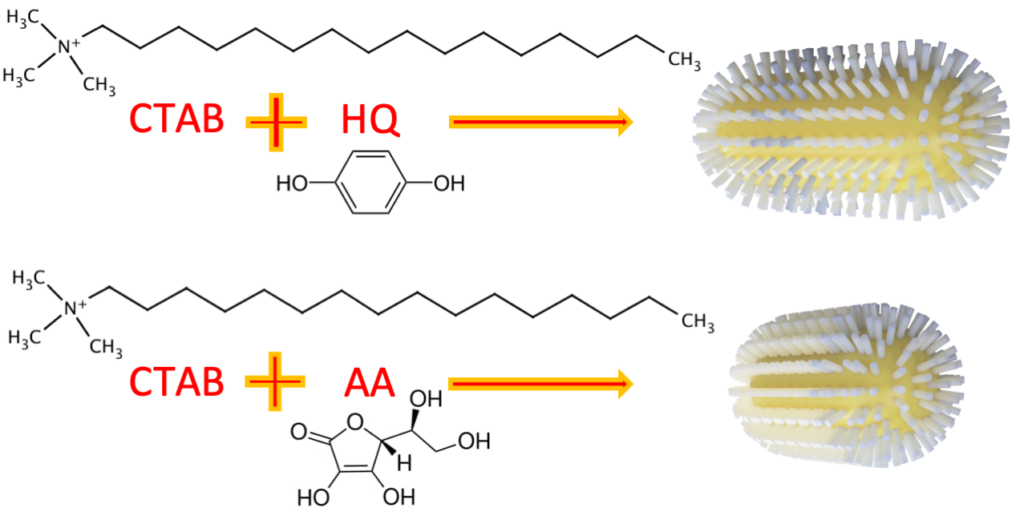Control shape and properties of gold nanoparticles
|Due to their maximized surface-to-volume ratio, noble metal non-spherical nanoparticles, such as gold nanorods, have physicochemical properties that make them suitable for application in the field of therapeutic and imaging. Every ingredient/parameter used in the synthesis procedure of these nanomaterials plays a critical role in determining their shape, and consequently their chemical and physical properties. It is then fundamental to understand this process in detail.

In this context, Chiara Battocchio, Simone Amatori (Università Roma Tre) and colleagues investigated the molecular, electronic and chemical structure of gold nanorods which were stabilized by binary ligand mixtures of cetyltrimethylammonium bromide (CTAB, primary ligand) and ascorbic acid (AA) or hydroquinone (HQ) (secondary ligands). To do so, they combined microscopy studies as Scanning Electron Microscopy (SEM, available at the CERIC Czech partner facility Charles University in Prague), with a series of complementary analyses, performed with several instruments and techniques, including X-ray photoelectron spectroscopy, (available at the CERIC Italian partner facility at Elettra Sincrotrone Trieste, on the beamlines SupeESCA), and X-ray absorption spectroscopy (available at beamline XAFS of Elettra Sincrotrone Trieste, and at the LISA beamline of ESRF, CERIC associated facility). Scientists could then demonstrate that nanorods stabilized by different secondary ligands differ in the plasmon band position, morphology and aspect ratio, due to the influence of the different secondary ligands on the anisotropic growth process.
The possibility to finely control the shape and dimension of nanorods by selecting the secondary ligands opens new perspectives in the design and synthesis of these important class of nanoparticles, and in their application in novel diagnostic and therapeutical approaches.
ORIGINAL ARTICLE:
Gold nanorods derivatized with CTAB and hydroquinone or ascorbic acid: spectroscopic investigation of anisotropic nanoparticles of different shapes and sizes
Amatori S., Lopez A., Meneghini C., Calcabrini A., Colone M., Stringaro A., Migani S., Khalakhan I., Iucci G., Venditti I., Battocchio C., Nanoscale Advances, 2023, 5, 3924-3933.



